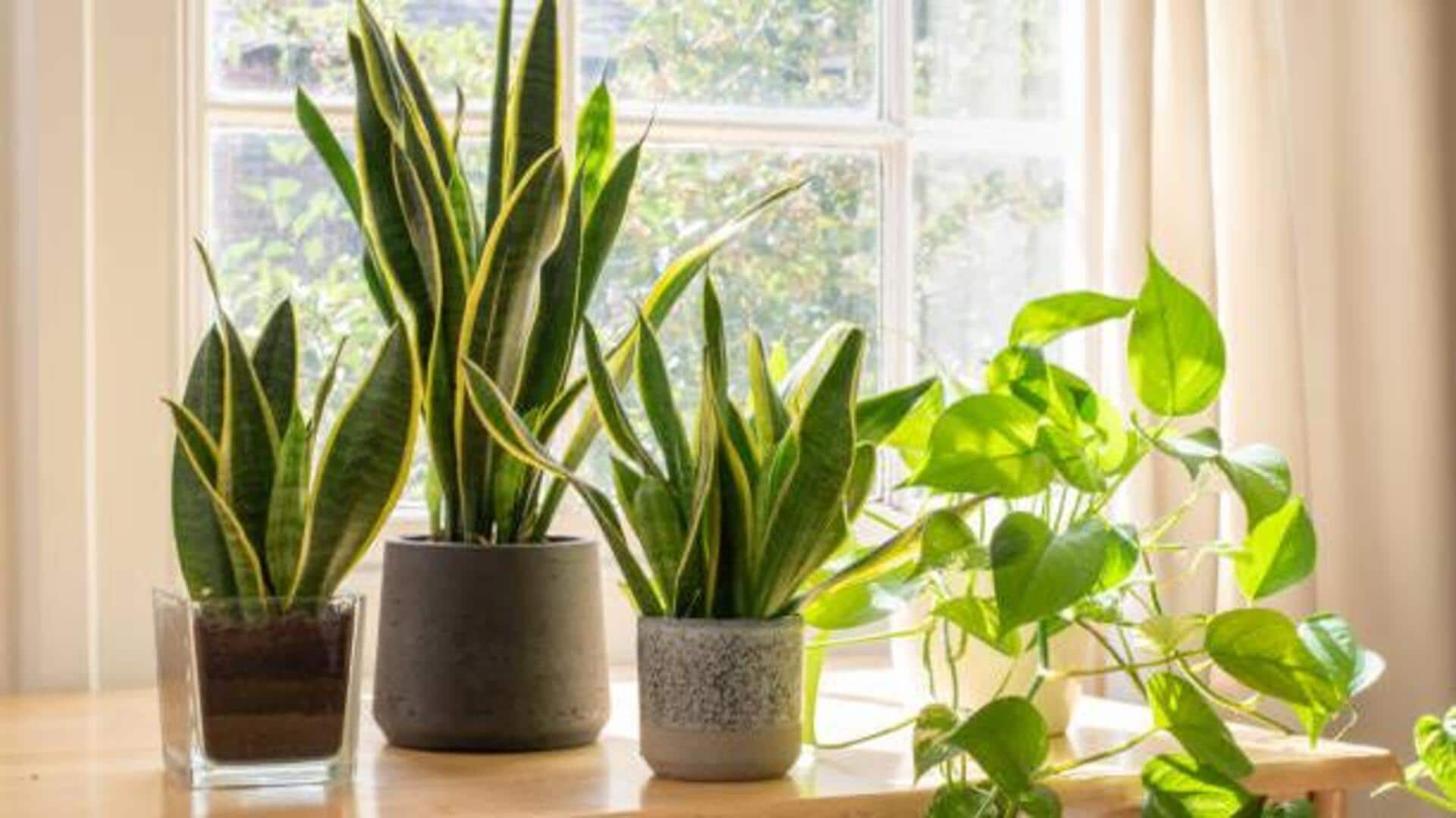
5 low-maintenance plants for a greener home
What's the story
Houseplants do more than beautifying your home; they can also cleanse indoor air. Apart from popular choices such as the spider plant and peace lily, some lesser-known plants naturally purify air. These unique houseplants reduce pollutants, thus enhancing your well-being. Explore these options for your indoor garden.
#1
Snake plant's air-purifying abilities
Commonly known as the snake plant, Sansevieria is an ideal pick for enhancing air quality. It is famous for converting carbon dioxide into oxygen at night, which is why it's perfect for the bedroom. This plant can filter out toxins like formaldehyde and benzene from the air. Its tough nature means you won't have to put in much effort and it will grow well even in low light.
#2
Boston fern's humidity boosting properties
Boston ferns are known to be great at removing pollutants like formaldehyde and xylene from the air. They are especially good to increase humidity indoors, which comes in handy during dry seasons or in houses with central heating systems. These ferns thrive in indirect sunlight and require regular watering to stay as lush as they are.
#3
Rubber plant's toxin absorption capabilities
Another rare houseplant that does a great job at absorbing airborne toxins like formaldehyde is the rubber plant. Its big leaves make it effective at filtering out impurities and also add a bold look to any room. The rubber plant prefers bright, indirect light and requires average watering to keep its soil moist but not soggy.
#4
Lady palm's versatile growth conditions
Versatile lady palms adapt excellently to all indoor conditions. They efficiently clean ammonia and other harmful toxins from the air, so they are perfect for kitchens or bathrooms where these chemicals are common. Lady palms prefer bright but indirect sunlight and should be watered regularly without letting the soil get waterlogged.
#5
Areca palm's oxygen production efficiency
Areca palms are also prominent because of their high oxygen production rate among other houseplants. They keep indoor air clean by filtering toxins such as xylene and formaldehyde. Simultaneously, they also release moisture in the atmosphere through transpiration processes. This is perfect for dry climates or heated spaces in winter months. When humidity levels drop drastically indoors.